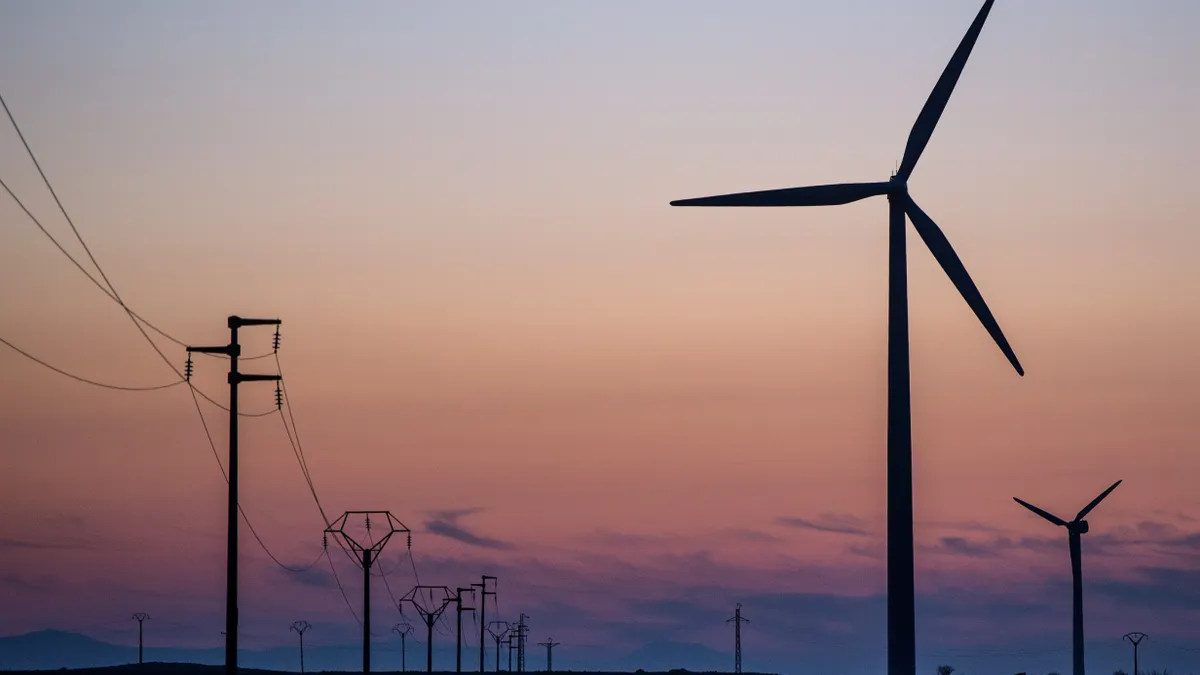Dive Brief:
- Roughly a year after record low temperatures led to devastating blackouts in Texas, there's been a clear realization in the U.S. and global electric sector that resiliency and affordability are a key part of the clean energy transition, according to experts at the United States Energy Association's (USEA) 2022 State of the Energy Industry Forum on Thursday.
- Industry players have reasons to be optimistic about decarbonization efforts, due in part to the recent passage of the bipartisan infrastructure package, which was "the largest investment that has been made in the history of the world for clean energy," according to Arshad Mansoor, president and CEO of the Electric Power Research Institute.
- At the same time, the power sector faces both new and old challenges in 2022, leaders of trade groups said, including supply chain constraints, a tight labor market, cybersecurity, as well as reliability concerns.
Dive Insight:
The reliability crisis that occurred last year in Texas was a clear indication that as the energy system is transitioning towards cleaner resources, the weather is also changing, said Mansoor — a dynamic that the electric sector needs to embed into its planning processes. This will be especially important as the electric sector becomes "the tip of the spear" of an economy-wide decarbonization effort, according to Mansoor.
"What happened in Texas… is really not because of the clean energy transition — it is [because] we have not come up with a new planning paradigm for energy resources for extreme weather," he said.
Going into 2022, agencies are beginning to roll out provisions of the Infrastructure Investment and Jobs Act. The Edison Electric Institute supported the major provisions of the bill, and believes it will help develop more clean energy, electric transportation and a more reliable electric system, Tom Kuhn, the trade group's president, said at the USEA event.
The transportation provisions will be an especially important part of the equation, Kuhn said.
"We now have 2 million [electric vehicles] on the road. We expect by the year 2030 that there will be more than 20 million, and I think that the industry, along with the government, is strongly moving forward on electric vehicle charging stations and infrastructure," Kuhn added.
There is, however, major legislation still pending in Congress — the Build Back Better bill, which could provide $550 billion in funding for climate and clean energy.
"Now, the Democrats, including the president, are talking about breaking the bill up, and the good news is that the highest [priorities] everyone's talking about right now are the climate provisions and the tax provisions," Kuhn said, adding that solar and wind tax provisions in the bill, among others, could really benefit the power sector.
At the same time, the industry is facing its fair share of challenges, said Jim Matheson, CEO of the National Rural Electric Cooperative Association (NRECA). For instance, the electric sector is also faced with the same supply chain constraints that other sectors of the economy are experiencing.
There are "some serious disruptions and delays and some significant cost impacts for just basic, basic materials that it takes to run an electric utility," he said.
In addition, the electric sector is contending with a tight labor pool and the broader trend of the "Great Resignation," Matheson noted. Lineworkers have important and challenging jobs, "and I think it's important that we collectively, as the energy sector, always are looking for ways to keep the pipeline going in terms of building that workforce," he said.
On the reliability front, NRECA is concerned about having 24x7 baseload power, as well as the ability of gas supply and infrastructure to deliver gas to make electricity during extreme weather. Moreover, a vast majority of electric cooperatives are purely in the distribution business and as new electric loads, like EVs, come online, they bring with them a whole series of new issues.
"There are new challenges, new demands, new requirements are going to be placed on the distribution side of our electric grid. The cooperatives are so much a distribution-oriented set of utilities, that's really top of mind for us," Matheson said.













